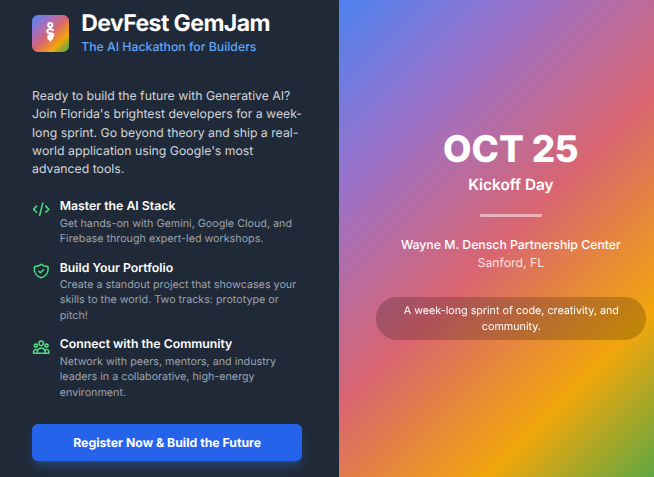
(and Have Fun Doing It!)
So you’ve been tinkering with TypeScript and Node.js, and now you’re curious about building something smarter—something that can reason, plan, and act. Welcome to the world of agentic systems! These are AI-powered apps that don’t just respond—they think, decide, and do.
The good news? You don’t need a PhD in AI to get started. With the right tools, you can build your own agents that talk to APIs, summarize documents, or even plan your weekend. Let’s explore four beginner-friendly paths to building agentic systems using JavaScript/TypeScript:
1. Google AI Studio (https://aistudio.google.com/)
What it is: A no-code/low-code playground for building AI agents using Google’s Gemini models. You can create structured agents that call APIs, use tools, and respond intelligently—all from your browser.
Why it’s fun:
– Drag-and-drop interface with natural language prompts
– Great for prototyping without writing much code
– Built-in support for tool calling and memory
– You can export your agent to code when you’re ready to scale
Pros:
– Super beginner-friendly
– Fast to prototype and test ideas
– Integrates with Google APIs easily
– No setup required
Cons:
– Limited customization compared to full code
– Not ideal for complex workflows
– Requires Google account and cloud setup for deployment
Best for: Trying out ideas quickly and learning how agent workflows are structured.
2. LangChain.js + TypeScript
What it is: A powerful framework for building agentic systems in JavaScript/TypeScript. LangChain helps you chain together LLMs, tools, memory, and more.
Why it’s fun:
– You get to build your own agent from scratch
– Tons of flexibility and open-source integrations
– Great for learning how agents reason and plan
Pros:
– Full control over logic and tools
– Active open-source community
– Works with many LLM providers (OpenAI, Anthropic, etc.)
– TypeScript support is solid
Cons:
– Steeper learning curve
– Requires more setup and debugging
– Can be overkill for simple use cases
Best for: Developers who want to get hands-on with agent architecture and build production-ready systems.
3. Google Genkit (for Node.js)
What it is: A new open-source framework from Google for building AI apps in Node.js. It’s like a TypeScript-native cousin of LangChain, with a focus on developer ergonomics.
Why it’s fun:
– Built with TypeScript in mind
– Easy to define tools, flows, and LLM interactions
– Great DX (developer experience) with hot reload and local dev
Pros:
– TypeScript-first design
– Simple YAML + code hybrid for defining agents
– Integrates with Gemini and other models
– Built-in observability and tracing
Cons:
– Still early in development (some features evolving)
– Smaller community than LangChain
– Mostly focused on Google ecosystem
Best for: TypeScript fans who want a clean, modern way to build AI agents with minimal friction.
️ 4. Ollama + Node.js (Local Models FTW!)
What it is: Ollama lets you run LLMs like LLaMA, Mistral, and Gemma locally on your machine. Combine it with Node.js to build fully offline agentic systems.
Why it’s fun:
– You’re running your own AI models—no API keys, no cloud!
– Great for privacy, experimentation, and edge devices
– Feels like magic when it works
Pros:
– No internet required once models are downloaded
– Fast response times (no API latency)
– Great for hacking and learning how models work under the hood
Cons:
– Requires a decent machine (RAM/CPU/GPU)
– Limited model sizes and capabilities compared to cloud LLMs
– You’ll need to handle more infrastructure yourself
Best for: Tinkerers, privacy-conscious devs, and anyone who wants to run AI on the edge.
So… Which One Should You Try First?
| Tool | Best For | Code Required | Customization | Fun Factor |
|---|---|---|---|---|
| Google AI Studio | Prototyping & learning | Low | Low–Medium | ⭐⭐⭐⭐ |
| LangChain.js | Full-featured agent systems | High | High | ⭐⭐⭐⭐ |
| Google Genkit | TypeScript-native AI apps | Medium | Medium–High | ⭐⭐⭐⭐⭐ |
| Ollama + Node.js | Local/private agentic systems | Medium–High | High | ⭐⭐⭐⭐ |
Final Thoughts
Agentic systems are the future of intelligent apps—and you don’t need to wait to be an expert to start building them. Whether you’re dragging blocks in AI Studio, chaining tools in LangChain, or running models locally with Ollama, you’re learning how to build software that thinks.
So pick a path, spin up a project, and let your agentic journey begin. And hey—if you build something cool, share it with the world (or at least your dev friends)!
Related Posts
– Building Intelligent Content Workflows with Google’s Agent Development Kit
– Building Simple Agents with .NET and CSharp
– Microsoft Build 2025 – Welcome To Open Agent Enabled Web

Learn more at DevFestFlorida.com
Leave a Reply